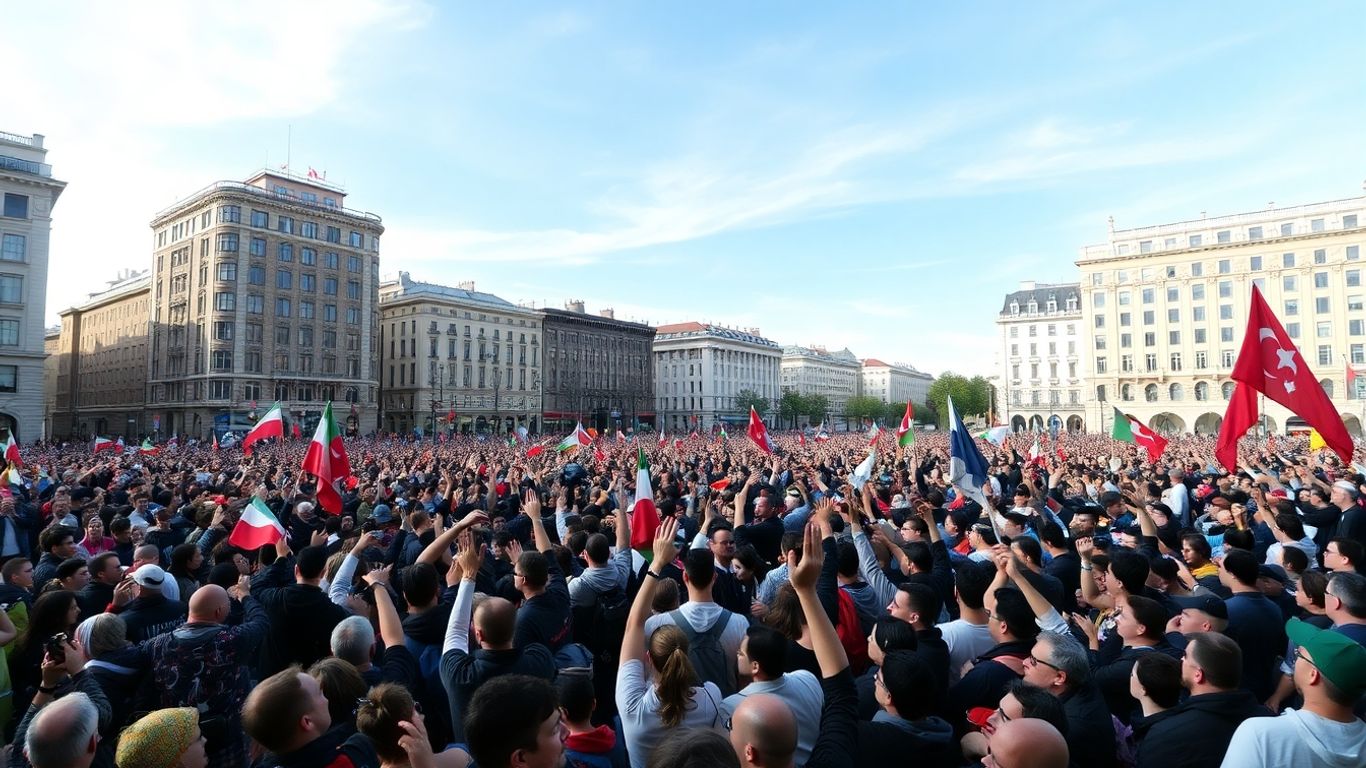Thousands of Serbians took to the streets in multiple towns on Wednesday, continuing their sustained protests against President Aleksandar Vučić’s rule. The demonstrations, marking 11 months since a tragic canopy collapse in Novi Sad, highlight persistent calls for justice and early elections, despite a government crackdown on dissent.
Key Takeaways
- Protests intensified 11 months after a deadly canopy collapse in Novi Sad, linked by protesters to corruption.
- Students are a driving force, demanding accountability and early elections.
- The government has responded with a crackdown, including detentions and alleged pressure on protesters.
- International bodies, including the EU, are expressing concerns over democratic freedoms and the rule of law in Serbia.
Roots of the Resistance
The current wave of protests was ignited by the collapse of a concrete canopy at the Novi Sad train station in November 2024, which resulted in 16 fatalities, including children. Protesters attribute the tragedy to graft-fueled negligence in construction projects, particularly those involving Chinese companies as part of a wider railway overhaul. The event has become a symbol of broader discontent over alleged corruption and a lack of government accountability.
Demands and Government Response
University students have emerged as a primary force behind the rallies, initially seeking justice for the Novi Sad victims. Their demands have since expanded to include early parliamentary elections, aiming to unseat Vučić’s populist government. In response, authorities have reportedly intensified a crackdown, with riot police dispersing rallies, detaining, and allegedly mistreating protesters. Reports indicate that scores of individuals have faced job losses or other forms of pressure for participating in the demonstrations.
Shifting Political Landscape
President Vučić, who once presented himself as a pro-European reformer, is now accused of stifling democratic freedoms and fostering corruption. His government has tightened its grip on power, with critics drawing parallels to authoritarian leaders like Slobodan Milošević and Vladimir Putin. While Vučić maintains close ties with Russia and China, Serbia’s EU membership bid has stalled, with the bloc expressing concerns over democratic backsliding, media freedom, and the rule of law.
International Scrutiny
European Union officials have voiced increasing concern over the situation in Serbia. European Commission President Ursula von der Leyen, during a recent visit, emphasized the EU’s commitment to freedom and the right to peaceful assembly. She also met with civil society representatives, signaling a broader engagement beyond government officials. While some procedural steps towards EU reforms have been noted, the EU stresses the importance of actual implementation and alignment with EU foreign policy, particularly regarding sanctions against Russia.
Sources
- Serbian protest President Vucic 11 months after canopy collapse, AP News.
- Serbia’s Aleksandar Vučić clings to power – but protests highlight the danger of stubborn leadership, The Conversation.
- Political crisis rumbles in Serbia as duelling camps hold parallel rallies | Protests News, Al Jazeera.
- Change in tone for some, disappointment for others, European Western Balkans.






